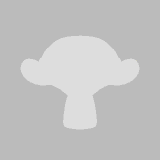House of Chores: testing Grease Pencil 3.0
- Standalone Project
- 19 Nov 2024
- 6 min read
- 4 min watch time

Other Authors



I took this opportunity to propose an idea: to initiate small projects focused on Grease Pencil 3.0 development. The concept involved creating a series of short, 10-second animated clips, each exploring a unique style and technique using Grease Pencil 3. These clips would serve a dual purpose; identifying bugs by thoroughly testing the tools during production, and acting as a captivating teaser for the tool’s release in November. Additionally, the project files would be shared with the community, allowing others to explore and learn from them.

The articles to the other Grease Pencil projects: Cowboi, Color Void and Project Gold [links to come as they get published].
Edit: a featurette on the project is now available to watch here
House of Chores
With this project, I wanted to create a rich, animated diorama that could serve as a benchmark for performance testing while utilizing a variety of tools in combination with Grease Pencil. This concept ultimately earned its place as the splash screen for the Blender 4.3 Beta.
The idea behind House of Chores is to depict a self-sustaining house that takes care of all the chores automatically, allowing its owner to focus on making music and being creative. It serves as an analogy for the role AI can play—supporting human creativity and handling routine tasks, rather than taking over completely. I envisioned the style to be loose, with a hand-drawn quality reminiscent of illustrations in a children's book. Some of the visual inspirations include the video game Machinarium and the drawings of Philippe Fix.

After creating the initial sketch on a 2D plane, I began modeling simple 3D geometry to define the main shapes of each asset. The outlines (or inklines) were created entirely using Grease Pencil, with the lines projected onto the 3D geometry. A particularly useful feature of the “drawing on surface” option is the ability to select specific objects for projection mapping. This is especially helpful when dealing with overlapping geometry, allowing you to control where the lines are applied and avoid drawing on unwanted surfaces.
Texturing

Using texture painting also provided the flexibility to create organic silhouettes for each object, rather than being limited by the geometry itself. Ultimately, the texturing and detailed coloring were done in Krita by Vivien Lulkowski.
Animation
The goal for animating assets was to utilize a diverse set of tools within Blender. This approach allowed me to thoroughly test each feature of the new Grease Pencil, as well as evaluate the conversion process to the updated version. Ultimately, I aimed to explore the full range of Grease Pencil's capabilities, identifying bugs and using this project as a benchmark for future testing.
Some objects were traditionally animated by hand-drawing each frame. For example, the trumpeter on the balcony was animated this way to suit the character's design and movement. Other elements, like the robotic arm stirring the kettle, as well as the smoke and fire from the kettle, were also hand-animated.

I used simple bone rigging for animating mechanical assets like the water bucket, catapult, and net. Some elements, such as the extended scissors and the paint roller, combined traditional animation with bone rigging support. Initially, the bone rigging wasn’t fully compatible with the new system, but after some adjustments, I was able to create rigs for animation.
Line Art Modifier
One of the few fully 3D animated objects is the waterwheel. My initial plan was to trace each frame and create a loop, but the perspective shift made this approach too complex and time-consuming to animate by hand. This challenge provided a good opportunity to use the “line art” modifier alongside the 3D waterwheel, blending it aesthetically with the overall style. To enhance the hand-drawn feel, I applied a noise modifier to the outlines.

Grease Pencil and Geometry Nodes
A major update with Grease Pencil 3 is the support for Geometry Nodes. I had to integrate this feature in a way that was manageable without turning it into a separate project. The chimney smoke plumes were an ideal candidate for this. I created a single stroke and applied an animated noise modifier with an upward direction. To achieve a semi-transparent effect, I added a color ramp with an alpha channel to the material. Using the "Step" math node, I converted the procedural animation to run on 2s, aligning with the style of the other animated objects.

A collaboration with development on Blender 4.3 alpha
When we began working with the new alpha build of Blender early on, we knew it would be highly experimental. This often meant that basic features would suddenly stop working or cause Blender to crash instantly, especially when new features or functionality were being added. While this could be cumbersome during project work, it was all for the greater good—identifying bugs and contributing to the improvement of Blender’s functionality.
We frequently communicated with Falk, sometimes on a daily basis, to report bugs and discuss user interface issues, tool behavior, and potential solutions. This close collaboration was mutually beneficial: it allowed us to stay informed about ongoing developments, and it gave the developers insight into the challenges we faced in a real production environment.

We hope you enjoyed this read, and feel free to share any questions or feedback you might have! If you want you can download the file below.

6 comments

dope!

dew

ldodew

This animation is nothing short of a visual masterpiece.

cool!!

Super cool! It's definitely going to take a little time for me to go through this massive endevour! Thanks so much for sharing. Very exciting stuff.
Join to leave a comment.